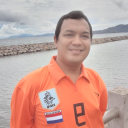Tentang KamiPedoman Media SiberKetentuan & Kebijakan PrivasiPanduan KomunitasPeringkat PenulisCara Menulis di kumparanInformasi Kerja SamaBantuanIklanKarir
2025 © PT Dynamo Media Network
Version 1.103.0
Konten dari Pengguna
Innovation-driven Development (1)
23 Juli 2020 13:15 WIB
Diperbarui 6 Agustus 2020 13:16 WIB
Tulisan dari Yopi Ilhamsyah tidak mewakili pandangan dari redaksi kumparan

ADVERTISEMENT
The leaders of this country have long yearned for the development of Indonesia that is driven by innovation. President Joko Widodo, in his speech a day before the 74th independence anniversary of the Republic of Indonesia (last year), mentioned the slogan "SDM unggul Indonesia Maju (Excellent Human Resources, Indonesia Onward)". These four words are full of optimism to realize the full sovereignty of the nation. The accelerated development included not only infrastructure but also human resources are fundamental to achieve this objective.
ADVERTISEMENT
Excellent human resources require intellectual, spiritual, emotional and kinesthetic intelligence. Formal educational institutions equip students with intellectual intelligence, while family first establishes the spiritual, emotional and kinesthetic intelligence that contribute to developing the morals of Indonesian people. Moreover, physical health, being free from the threat of stunting and epidemic diseases, is crucial to achieving outstanding human resources.
Thus, the convenience of the environment must also be considered. The synergy between these aspects will create the culture of Indonesian to realize a developed Indonesia in the future. A strong will and hard work are needed to achieve this goal, and this is in line with Allah’s guidance in the Quran, Surah Ar-Ra’d [13]: 11 “…Indeed, Allah will not change the condition of a people until they change what is in themselves…”.
ADVERTISEMENT
Indonesia seems to be complacent about its abundant natural resources and fertile land. The dogma of rich country and poor people has stuck to us. Why is that? Because from the era of spices to mining, foreigners kept coming to monopolize our resources. We are quoting one of Aceh proverb “Buya Krueng Teudong-dong, Buya Tamong Meuraseuki, meaning that we are the spectators in our own country”.
If we review the reasons those foreigners came all the way, we discover that their motivation was to change the fate of the Europeans. This motivation made them innovate by creating ships to sail the ocean for months to years, study the nature, open the routes for journey and logistics by good navigation knowledge. When they arrived in our country, they kept innovating to sustain their activities, by studying the natural characteristics, including the soil and climate.
ADVERTISEMENT
They also introduced the concepts of smart agriculture, proper water management, and good warehousing system. Moreover, they created healthy cities as well as built ports and shipyards. All of these lead to increase their living standard and to create a golden era. Despite its controversy, this story at least inspires us to create innovations that will lead to Indonesia to the peak of its glory.
On the 24th National Technology Awakening Day, Hari Kebangkitan Teknologi Nasional, at the end of August last year, former vice president, Jusuf Kalla, demanded Indonesian researchers learn the updated technology from other countries. He also said that innovation sometimes started by adopting, then improvising and developing.
ADVERTISEMENT
Indonesia has many research and development (R&D) divisions under the ministries or institutions that can accommodate the innovative ideas in the fields in line with the government's priority. Interdisciplinary collaboration is necessary to improve competitiveness. The government plan in creating a National Research Agency to unify all R&D is expected to accelerate the innovation development, not only drive the national growth but also address various problems in society.
For instance, the government, through BPPT, has developed a garbage power plant in Bantar Gebang to reduce waste and environmental pollution that negatively affect health. This device will be installed in the landfills around Indonesia. Plastic waste, non-biodegradable, for a local scale such as a rural environment, can be converted into kerosene by a simple distillation process employing a simple tool.
ADVERTISEMENT
The kerosene can be distributed to cover the daily needs of the villagers or the fuel of the household industry units, such as chips and traditional snacks home industries, at the same time to develop the community economy. A little innovation to perfect the distillation process will lead to this plastic waste to produce the fuel that satisfies the emission test for motor vehicles, and it starts from the village.
Therefore, the environmental issues are addressed by renewable energy. This is one of the implementation of the higher education tri dharma as well as the responsibility of Indonesian researchers and engineers in an integrated research body.
Many innovations have also been created in the field of food. Food diversification has been introduced to fulfil the carbohydrates, and adequate nutrition needs to solve stunting issues. For people in certain regions, such as Maluku and coastal Papua who consume Sago and Sweet Potatoes; and people who live in the mountains.
ADVERTISEMENT
The innovations have been created to increase the productivity of staple food commodities by introducing the concept of modern agriculture and processed products. It has also campaigned to other regions in Indonesia. For instance, Nusa Tenggara and East Java, where the people eat corn and cassava as well as East Kalimantan, where people eat cassava.
Agricultural innovations are necessary to overcome climate risks during climate change. One of the examples is the concept of climate-smart agriculture that utilizes the climate elements (temperature rainfall, humidity, wind) and its variability to create a planting calendar integrated with the local wisdom, such as Keuneunong in Aceh, and Pranata Mangsa in Java. Both innovations enable the selection of the most appropriate planting time and commodities. Thus, productivity remains high, and crop failure can be avoided despite the dry climate in Indonesia.
ADVERTISEMENT
Why is climate prediction important? Because it is related to food that plays a significant role in fighting stunting, a severe malnutrition problem in developing countries. Climate change has an impact on mothers and children; in 2050, it is predicted that more than 25 million children will be malnourished due to climate change.
These circumstances also pose significant challenges for sustainable development. Climate change is a substantial threat to food security and nutrition. It is estimated that it will increase stunting among children around 23% in Africa and 62% in Asia by 2050, compared to the condition without climate change. Climate change in term of high temperatures, the scarcity of land and water, floods and drought, negatively affects agricultural production and damage to the food system. This will increase the risk of hunger and lead to food insecurity.
ADVERTISEMENT
The vulnerable to risk groups will experience further damage to food and nutrition crises if they are exposed to extreme climate. If there is no effort conducted to improve the climate resilience, it is estimated that the global risk of hunger and malnutrition can increase up to 20 per cent by 2050. In Indonesia, various efforts have been conducted to address nutrition issues in children; however, the malnutrition incidence remains very high.
To date, nutritional problems are mainly addressed by providing supplementary food to malnourished toddlers, without really investigating the leading cause of these nutritional issues. A breakthrough that can be done is to map the area of malnutrition incidences by examining climate change and its relation to food availability.
ADVERTISEMENT
Thus, the climate and food condition can be predicted to prevent malnutrition in infants. This is crucial as an adaptation and mitigation strategy for climate change to malnutrition that leads to stunting in Indonesia, nutrition security of Indonesia.

